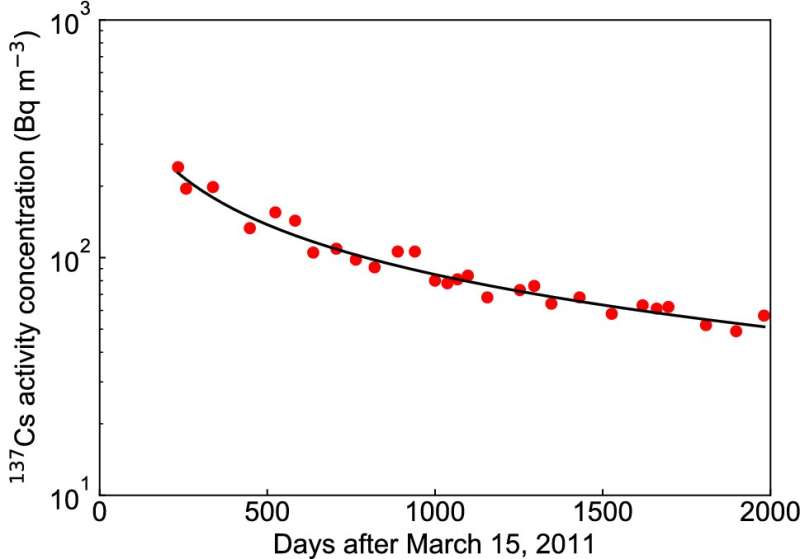Lake's radioactivity concentration predicted for 10,000 days after the Fukushima accident

In March 2011, the Fukushima Daiichi Nuclear Power Plant was damaged by a powerful earthquake and tsunami, causing nearby lakes to be contaminated with radioactive cesium-137. Although the contamination of one such lake, Lake Onuma on Mount Akagi, was measured for a few years after the accident, its long-term contamination has been uncertain. Now, a research team from Japan has shed light on this issue.
In a study published last month in Scientific Reports, researchers led by the University of Tsukuba have predicted the 137Cs radioactivity concentration of Lake Onuma for up to about 30 years after the disaster.
Lake Onuma is an example of a closed lake, in which the amount of inflow and runoff water is limited. The radioactivity concentration of such lakes declines sharply just after a nuclear accident but then can begin to decrease more slowly.
"Previous investigations have used the two-component decay function model, which is the sum of two exponential functions, to fit the measured 137Cs radioactivity concentration," says author of the study, Professor Yuko Hatano. "Our work is instead based on the fractional diffusion model, a framework that captures the complex diffusion processes occurring in the lake water. These processes include convection-induced circulation, turbulent mixing, and absorption by plankton and other organisms."
The research team used the fractional diffusion model to derive a long-term prediction formula for the 137Cs radioactivity concentration of both the lake water and pond smelt—a typical fish species in Lake Onuma. Given this prediction formula, they then estimated the radioactivity concentration for up to 10,000 days following the Fukushima accident.
"Both models fit the radioactivity concentration of the lake water and pond smelt measured in the first few years after the accident," explains Professor Hatano. "However, our results show that the decrease in radioactivity concentration is slowed down if the fractional diffusion model is used rather than the conventional two-component decay function model."
The researchers' formula will enable the long-term prediction of radioactive contamination in closed lakes and provide long-term prospects for residents living close to these bodies of water. However, the authors note that the validity of such a prediction for more than 5,000 days after the Fukushima incident would need to be evaluated using future measurements.
More information: Eiichi Suetomi et al, Long-term prediction of 137Cs in Lake Onuma on Mt. Akagi after the Fukushima accident using fractional diffusion model, Scientific Reports (2021). DOI: 10.1038/s41598-021-99667-1
Journal information: Scientific Reports
Provided by University of Tsukuba




















